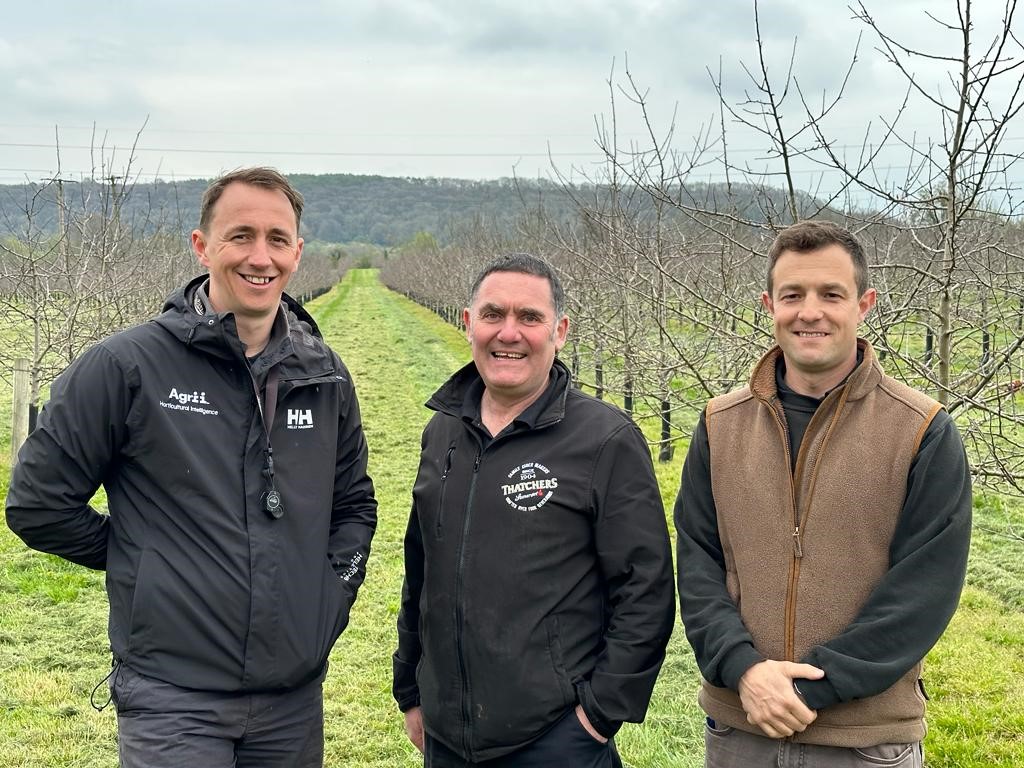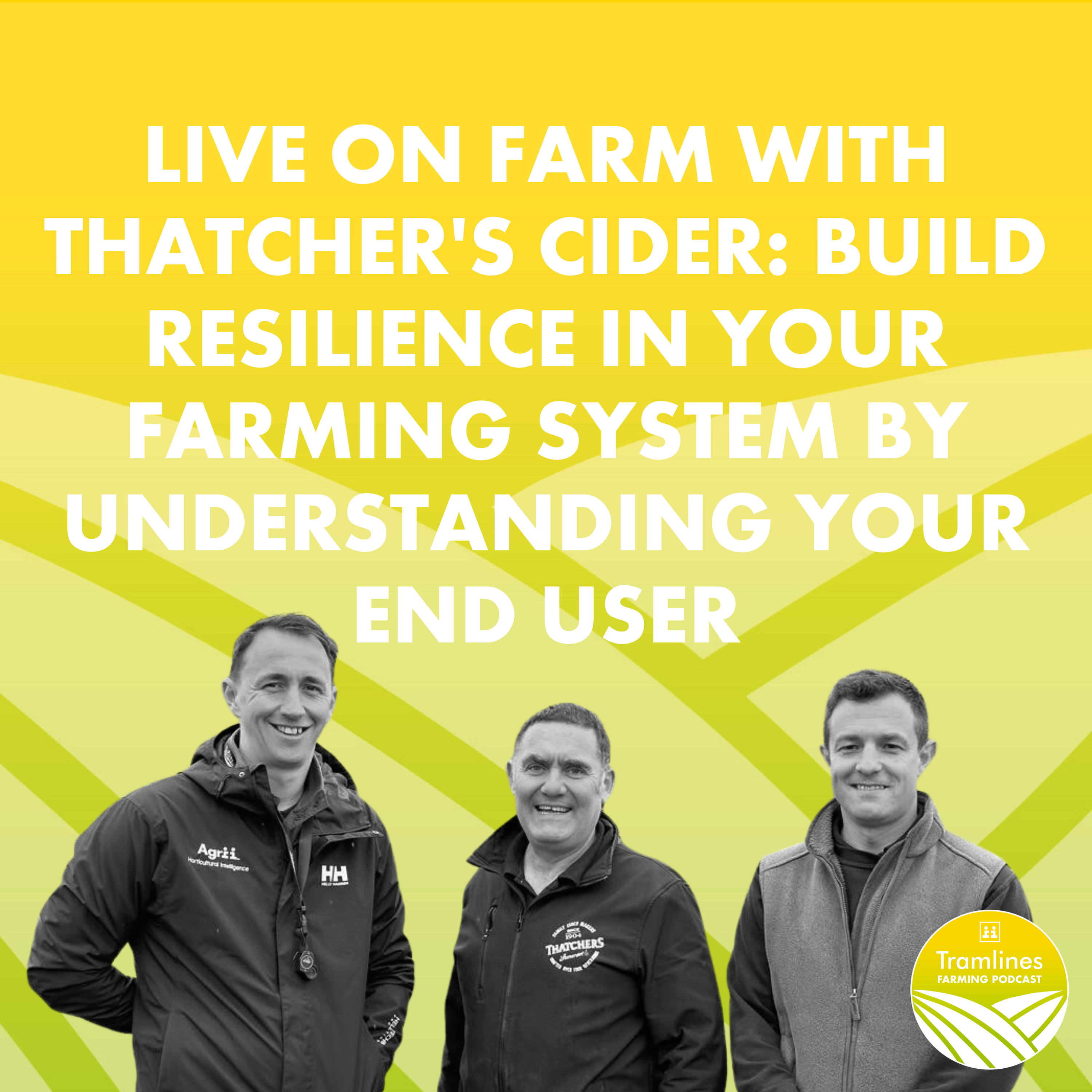

Somerset farmer William Thatcher made the first ever Thatchers cider at Myrtle Farm in 1904. Today, the farm continues to honour traditional varieties, as well as leading the way in cider innovation with its extensive variety trials.
Grower profile
- Farm manager: Chris Muntz Torres
- Location: Sandford, north Somerset
- Total farm size: 200 ha
- Varieties grown: Over 500 in total, including variety trials. Traditional cider varieties are grown, such as Dabinett, Somerset Redstreak and Tremlett’s Bitter; modern varieties such as Three Counties, Gilly, Hastings, and Prince William; and eating varieties such as Katy, Red Windsor, Jonagold and Falstaff, which are used to make lighter ciders.
- Soil type: Predominantly sandy-silt loam
From humble beginnings to iconic brand
As was the tradition in the early 1900s, Myrtle Farm – a mixed enterprise at the time – grew cider apple trees and pressed the fruit to make cider for its farm workers. William Thatcher soon became known for making the best cider around and began selling it in the local villages. The tradition continued through the generations to current cider-maker Martin Thatcher, William’s great-grandson. The fifth generation is also now working for the business, which has its roots firmly in the Mendip Hills area of north Somerset.
Sustainability is integral
Being a family company and growing apples and producing ciders in a sustainable way is integral to the farm. Whether that be by reducing plastic packaging (an area they are continually researching and innovating) or installing solar panels to contribute to their use of renewables and energy creation across their cider-making.
“We work hard to constantly reduce our use of water, to reduce our carbon, and our waste throughout our cider-making process,” farm manager Chris Muntz Torres comments.
“And we’re doing all of this from the ground up. We’re not investing in offset schemes or anything like that; we want our progress to be meaningful, genuine, and in itself, sustainable.
“As a cider maker with hundreds of acres of orchard, planting trees is second nature to us. As a family, Thatchers has been planting trees for generations. The resulting biodiversity within our orchards is amazing, and this is something that benefits not just our apples, but our local community too.”
There are 3,000 solar panels at Myrtle Farm which they anticipate will provide a total CO2 saving of 301 tonnes per year, and an annual generation of 1,064 Mwh of electricity, contributing to the green energy that is produced and used across the farm all year round.
A biomass boiler also uses wood chippings from the orchard, and apple waste left over from the cider making process goes for anaerobic digestion, though some is saved for cattle feed.
Loss of chemistry is a concern
Another benefit of being juice producers is that many of the superficial pests other growers would be concerned about are not a problem for Myrtle Farm. Instead, they focus on those that harm yields and tree health, including apple blossom weevil, rosy apple aphid, apple sore fly, woolly aphid and mites – specifically spider mites.
On the disease side, being in the west of the country, scab is one of the primary diseases of concern. Mildew can come in certain weather conditions and canker in some varieties. Fire blight is seen intermittently.
Myrtle Farm has worked with Agrii for at least 18 years, going back before Chris and Agrii agronomist Matt Greep’s time. Loss of chemistry to deal with pests is one of the biggest concerns, Matt explains. “We’ve known that for some time and Chris is very good at putting things in place to mitigate it. For example, reduced nitrogen inputs to make Katy less susceptible to woolly aphid and thinking about how they prune because the aphids like to overwinter in the crevices around the pruning cuts.”
“There are some really good cultural controls that Thatchers have put in place to try to minimise the risks. Chris has also tried some alternative products with varying degrees of success, including Sion and Magnesium Sulphate for breaking down the woolliness on the pest.”
“We have had great success with Batavia Spirotetramat at Myrtle farm for the control of woolly apple aphid. This product is quite technical and can often be used incorrectly by growers. As an agronomist, when I advise that product a lot of growers try and take short cuts and then it doesn’t work, but the Thatchers team are very good at thinking about how they can get the best out of the products. So although we’ve seen certain areas of the farm that probably haven’t had the best results from the product –perhaps because the pest pressure was just too high for it to manage – in other areas we’ve certainly seen it work well. And I put that down to the guys being very good at what they do when it comes to application and knowing how to use these products.”
Encouraging beneficials
There’s a big emphasis on letting beneficial insects fight it out with pests where possible. “The main thing we do, and a lot of people do, is avoiding broad spectrum insecticides – the loss of products is easy to fall back on with some of these but we’re trying to hold our own on that and maintain those natural background populations,” Chris says. As well as avoiding products that affect those beneficial populations, they try to encourage habitats – whether it’s in non-cropped areas around the orchards, or more recently, trying mixed species sward mixes between the trees in their young orchards over the past couple of years. When having conversations about what products work well for certain pests, Matt and Chris will not only consider whether the product hurts the pest, but also whether it hurts the beneficials. “ We need to factor that into the equation as well and that’s really integral for the IPM structure of the farm to work successfully. It’s a key part of the decision making – what is the product’s beneficial profile like, and do we have any data to back that up? If we haven’t, where are we going to find it?” Explains Matt.

Ciders of the future
Looking to the future of the cider apple industry, Chris says there is potential for further automation. “Whether it be during the harvesting process or even pruning – the majority of which is still done manually,” he adds. “It is encouraging to see the developments in other areas of agriculture and horticulture that our industry can look to.”
“For Thatchers, the aim is to keep doing what they’re doing;” making the best cider around, innovating and keeping our consumers excited about new flavours and styles.” As part of this, the farm is running more tree trials than anyone else in the industry, featuring around 100 varieties making up 10% of the total acreage, according to Chris. Key to this is finding varieties that are good for the market but also grow well in Myrtle’s system.


